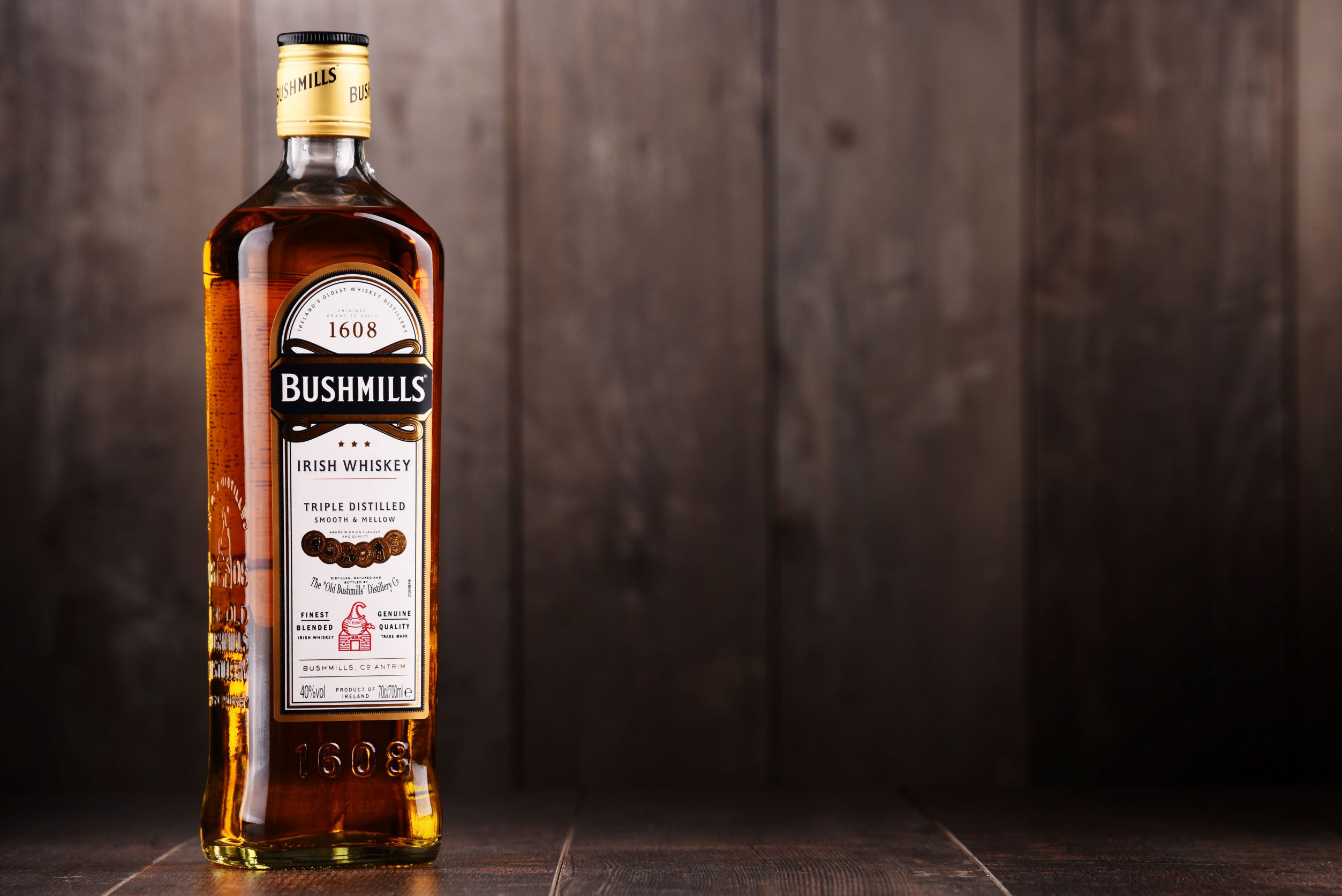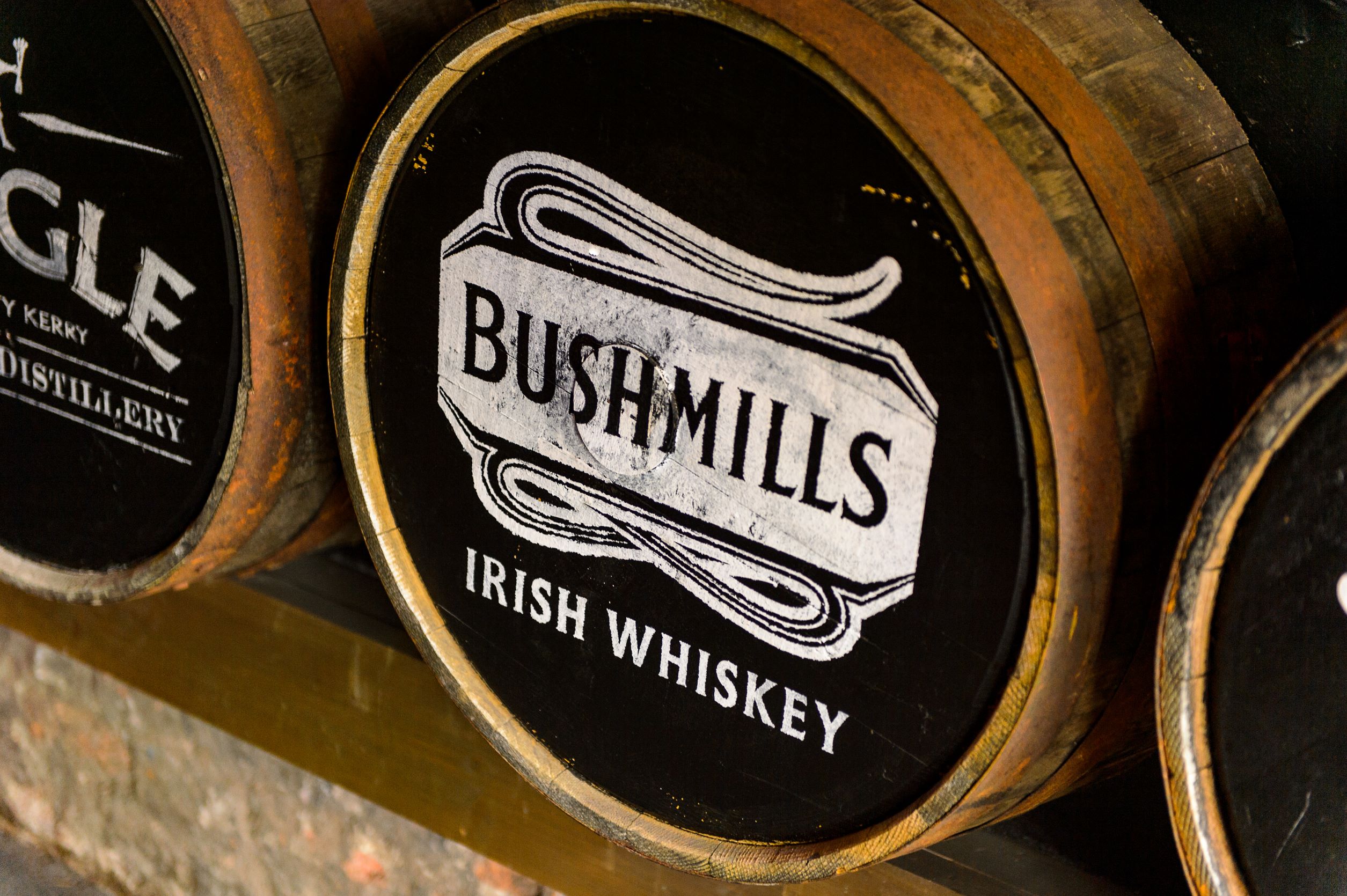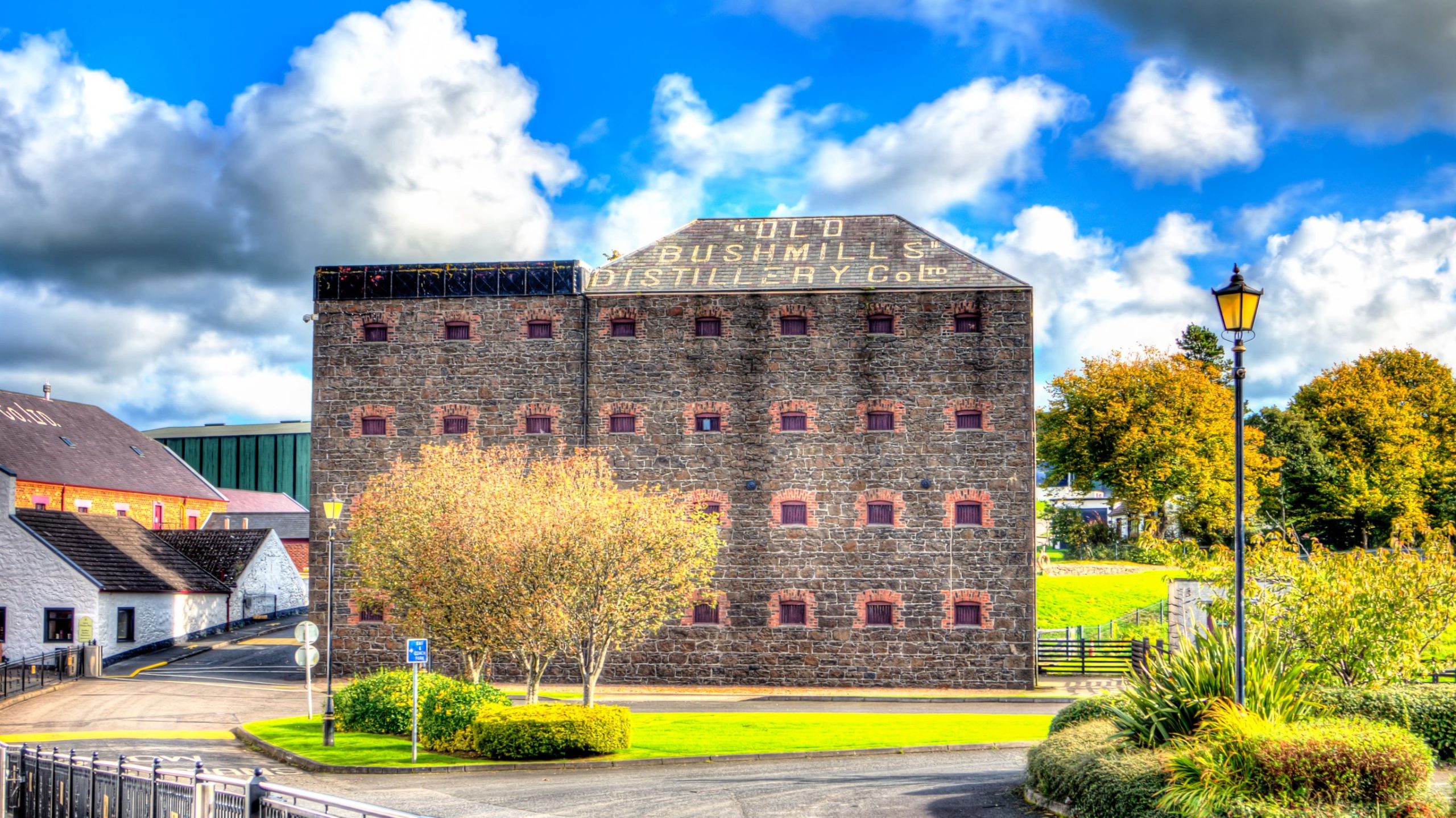Bushmills traces its history staggeringly far back, all the way to 1608. To put that in perspective, consider that the formation of the United States was more than a century and a half away and the first colonial settlements, including Jamestown, were founded the year prior in 1607. Of course we should note that the company Bushmills has direct ties to its licensing in 1784 and had likely been unofficially operational for a few decades prior to that. The 1608 mark is tied to distillation in the town of Bushmills itself. But either way, Bushmills has quite a history and heritage behind it. Yet, even with our recent obsession with whiskey, we American whiskey drinkers seem under informed on the distillery. As such, a recent visit to Northern Ireland offered a welcome exploration of the production and future of Bushmills.
Only Single Malt
The Old Bushmills Distillery produces single malt—that’s it. “We’ve always stayed true to 100% malted barley,” explains Master Blender Helen Mulholland. That’s really the history of Irish whiskey on the whole as well; at least until the Crown imposed taxes on malted barley. That of course led to an evolution of Irish whiskey based on the usage of unmalted barley.

“The tradition of Irish whiskey is single malt, even though we didn’t call it that at the time,” says Master Distiller Colum Egan. “And sticking with it is one of the reasons we survived.”
Moreover, the Irish whiskey industry as a whole has always thrived on the trading of stocks. This was particularly true when industry downturn and consolidation left only two distilleries on the whole Emerald Isle. What’s remembered even less in today’s thriving scene is that the two survivors—Midleton and Old Bushmills—were actually a part of the same portfolio for decades. Midleton is home to Irish whiskey brands such as Jameson, Powers and Redbreast, to name a few.
Change of Hands
To further explain Bushmills’ survival, we must look at its ownership over the past decades. In the early 1970s, Irish Distillers—now owned by Pernod Ricard—acquired Bushmills. The French company retained ownership until Diageo’s purchase of the distillery in 2005. This was followed by Jose Cuervo’s acquisition of the old stalwart in 2014. That final move was itself a trade: Cuervo, and its distribution wing, Proximo Spirits, gave up its remaining 50% ownership stake in Don Julio to Diageo. As a result, Diageo parted with the Irish whiskey legend (Doesn’t international booze business sound fun?).

This acquisition lesson further explains the grain whiskey used for Bushmills blended whiskeys, including the Original and Black Bush. It is trucked up from Old Midleton (owned by competitor Pernod Ricard) and aged on-site at the Bushmills warehouses. Black Bush itself is made of 80% malt whiskey—an unusually high ratio for a blend. That malt whiskey predominantly matures in oloroso sherry casks, the usage of which is another crucial component to Bushmills.
Delicate Distillate
According to Mulholland, Busmills’—and Irish whiskey in general’s—emphasis on the quality and lineage of the casks came long before the Scotch whisky industry’s renewed focus on the same ideals. This reasoning was due to the softer nature of Irish whiskey that comes from its triple distillation. In the case of the Bushmills Distillery, its tall, slender-necked pot stills further enhance the production of a delicate distillate. A deft hand with maturation was therefore always essential.
Back to those casks, Bushmills has approximately 350,000 of them maturing across its warehouses today, with sherry and bourbon casks being the predominant selections. That combination is what produces the Bushmills 10-year-old single malt. “I think of the 10 year as the foundation of Bushmills,” Mulholland says. “Bushmills at its purest, just bourbon and sherry.”
The starting point of the 10 year goes onto further life in the 16 and 21 year offerings. In the former, initial maturation lasts for over 15 years followed by a finishing process of nine months in port casks. As for the latter, an initial 19 year period of maturation is followed by two years in Madeira casks.
Planning for the Future
Things are busy on the grounds of the Old Bushmills Distillery these days. Not only is production steaming away at a nonstop, 24/7 clip, but an entire new sister distillery is being built next door. Scheduled to open in 2021, the carbon copy facility—all the still shapes and sizes and production methodologies will be mimicked—will double its output. Furthermore, a new warehouse is set to open roughly once every eight months for the next two decades to make way for all that extra distillate being churned out. Each one will be able to hold 20,000 barrels.

Remaining constant, of course, is the team’s focus on care and quality at every step. “You don’t compromise on ingredients and you don’t alter processes,” Egan says.
While consistency in quality is a top concern, there is an effort to unveil new and experimental offerings. One foray in that department is the Distillery Exclusive matured in acacia wood casks. “Acacia has a number of characteristics that I look for,” Mulholland says of the casks. “We get back this lovely spice.”
Elsewhere, a stroll through the Bushmills warehouses reveals more than a few hidden gems awaiting potential future star turns. Think Bordeaux wine casks; Cognac casks; different types of malt; and the allure of cask strength releases.
The demand is there, and the future is bright, something which is exciting not only for fans of Irish whiskey, but for the producers themselves, industry lifers such as Mulholland and Egan who’ve been through darker days and have helped usher in today’s surge. “Bushmills has been through a lot of turbulent times, but it weathers all storms,” Mulholland says. “It’s incredibly rewarding to see where Irish whiskey is today.”
With Distiller, you’ll always know what’s in the bottle before you spend a cent. Rate, Review and Discover spirits! Head on over to Distiller, or download the app for iOS and Android today!


